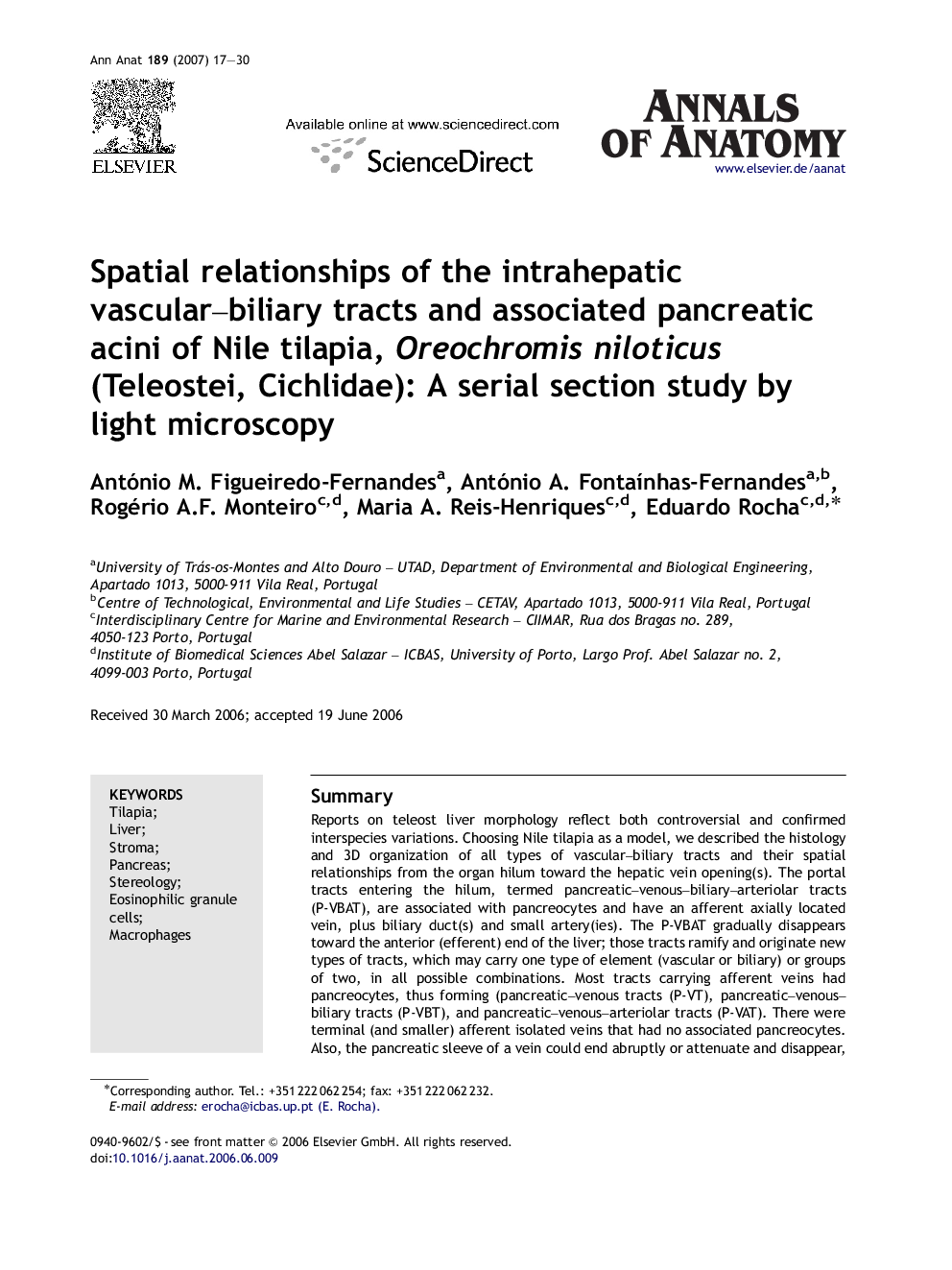| Article ID | Journal | Published Year | Pages | File Type |
|---|---|---|---|---|
| 8463012 | Annals of Anatomy - Anatomischer Anzeiger | 2007 | 14 Pages |
Abstract
Reports on teleost liver morphology reflect both controversial and confirmed interspecies variations. Choosing Nile tilapia as a model, we described the histology and 3D organization of all types of vascular-biliary tracts and their spatial relationships from the organ hilum toward the hepatic vein opening(s). The portal tracts entering the hilum, termed pancreatic-venous-biliary-arteriolar tracts (P-VBAT), are associated with pancreocytes and have an afferent axially located vein, plus biliary duct(s) and small artery(ies). The P-VBAT gradually disappears toward the anterior (efferent) end of the liver; those tracts ramify and originate new types of tracts, which may carry one type of element (vascular or biliary) or groups of two, in all possible combinations. Most tracts carrying afferent veins had pancreocytes, thus forming (pancreatic-venous tracts (P-VT), pancreatic-venous-biliary tracts (P-VBT), and pancreatic-venous-arteriolar tracts (P-VAT). There were terminal (and smaller) afferent isolated veins that had no associated pancreocytes. Also, the pancreatic sleeve of a vein could end abruptly or attenuate and disappear, reappearing in distal portions of the same vein. Thus, veins without pancreatic covering as seen in sections are not always efferent. Small arterioles can enter the liver retrogradely, via the adventitia of efferent hepatic veins, thus forming venous-arteriolar tracts (VAT). In comparison with the salmonid-liver type, there were no VBAT without associated pancreocytes and there was a smaller degree of ambiguity in identification of the afferent vs. efferent veins. Thus, the tilapine-liver type is proposed to be a more promising model for studying hepatic metabolic zonation in fish, defined not as in mammals, but eventually considering a gradient radiating from the hilum. Our data and differences from mammals supported the adequacy of the previously proposed nomenclature for the vascular-biliary tracts of fish livers, extending it to those that contain the exocrine pancreas.
Related Topics
Life Sciences
Biochemistry, Genetics and Molecular Biology
Cell Biology
Authors
António M. Figueiredo-Fernandes, António A. FontaÃnhas-Fernandes, Rogério A.F. Monteiro, Maria A. Reis-Henriques, Eduardo Rocha,
